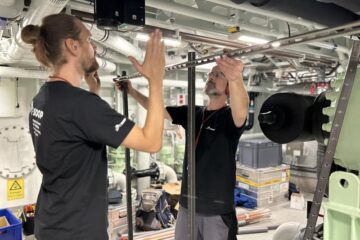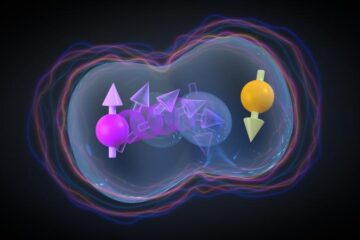How white is a paper?

Per Edström at Mid Sweden University has attracted international attention for his research, which has resulted in a new generation of computational tools for simulation of light in paper and print.
Whiteness is a fundamental property of paper. But what is whiteness exactly, how does it arise, and how do you measure whiteness? How difficult can it really be to produce good color prints?
Per Edström pursues research on mathematical modeling and scientific computing. His model is replacing an old model that has been used by the paper and printing industries since the 1930s.
“Light that hits paper penetrates a bit. Some of it is absorbed and disappears, while some scatters in other directions,” says Per Edström. “This is affected by fibers and fillers in the paper, and by various additives and ink. This is a rather complex process that gives paper its visual appearence. Tiny constituents in the paper provide the light with many surfaces to scatter against, and this helps create a lighter paper. Ink, on the other hand, absorbs light of different wavelengths, producing color. The total impression is also dependent on how all of the components in the paper are distributed, for example, how the ink penetrates into the paper. Finally, the color experience depends on how the eye and the brain interpret the visual impression, all of which means that it is not so simple to understand these phenomena in detail.”
Per Edström has delved deeply into numerical solution methods for systems of coupled integro-differential equations. There are many applications for this, one of which is to describe how light interacts with paper and print to produce a visual experience.
“I like to challenge my students with a little contest at the end of a lecture on whiteness,” says Per Edström. “They have fifteen minutes, and the student who submits the whitest paper will win a prize. Even though I have had many enthusiastic students, I have yet to award a prize. Contact me if you want to know why. And how white is a piece of paper anyway?”
Questions can be submitted to:
Per Edström, phone: +46 (0)611-862 44 or cell phone: +46 (0)73-760 21 51.
E-mail: per.edstrom@miun.se
Pressofficer Lars Aronsson; +46 (0)70 516 5336; Lars.Aronsson@miun.se
Media Contact
More Information:
http://www.vr.seAll latest news from the category: Physics and Astronomy
This area deals with the fundamental laws and building blocks of nature and how they interact, the properties and the behavior of matter, and research into space and time and their structures.
innovations-report provides in-depth reports and articles on subjects such as astrophysics, laser technologies, nuclear, quantum, particle and solid-state physics, nanotechnologies, planetary research and findings (Mars, Venus) and developments related to the Hubble Telescope.
Newest articles

Cruise Ship as Data Collector
New Approaches in Ocean Observation… Scientific research – not only confined to dedicated research vessels but also from non-scientific vessels and marine infrastructures. This is one of the ideas promoted…

Experiment opens door for millions of qubits on one chip
Researchers from the University of Basel and the NCCR SPIN have achieved the first controllable interaction between two hole spin qubits in a conventional silicon transistor. The breakthrough opens up…

Economies take off with new airports
A global study by an SUTD researcher in collaboration with scientists from Japan explores the economic benefits of airport investment in emerging economies using nighttime satellite imagery. Be it for…





















